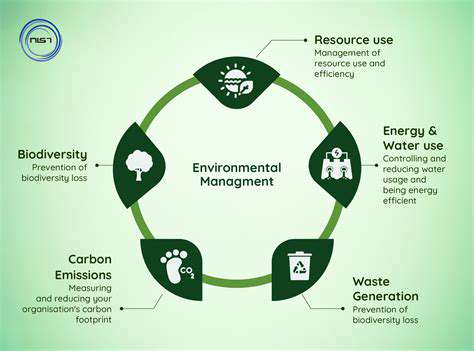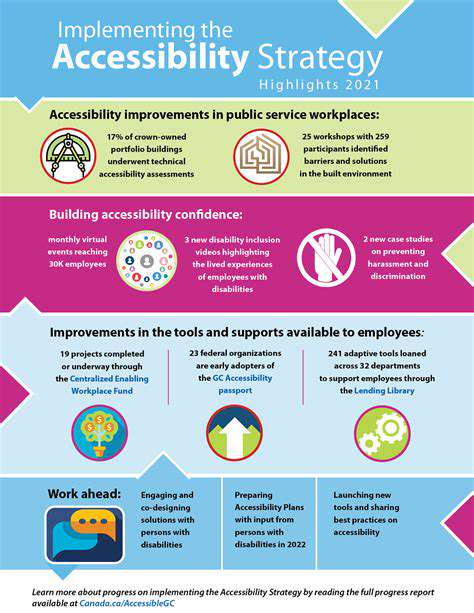Identifying Your Migraine Triggers and Preferences
Understanding Your Migraine Patterns
Recognizing the specific patterns of your migraines is crucial for identifying potential triggers. Many sufferers notice their headaches follow predictable cycles—perhaps tied to hormonal fluctuations, weather changes, or sleep disruptions. Maintaining a detailed migraine journal proves invaluable, where you record not just pain levels but also accompanying symptoms like nausea, light sensitivity, or visual disturbances. This practice helps uncover subtle connections you might otherwise miss.
Through consistent tracking, you might discover surprising correlations. Some patients find their migraines consistently appear after skipping meals, while others notice attacks following exposure to specific perfumes or cleaning products. These personal insights form the foundation of effective migraine management, allowing you to anticipate and potentially prevent episodes.
Dietary Considerations and Migraine Sensitivity
Food triggers vary dramatically between individuals, though some common culprits emerge repeatedly. Aged cheeses, processed deli meats, and fermented foods often contain tyramine and histamines that can provoke headaches. Surprisingly, even healthy foods like citrus fruits or nuts trigger migraines in some sensitive individuals. The key lies in personalized observation—what affects one person severely might not bother another at all.
Beyond specific trigger foods, your overall eating patterns matter significantly. Erratic meal times or prolonged fasting can trigger headaches through blood sugar fluctuations. Working with a nutritionist specializing in migraine diets often yields better results than generic elimination plans, as they can help identify your unique sensitivities while ensuring nutritional balance.
Environmental Factors and Migraine Provocation
Our surroundings constantly bombard us with potential triggers. Fluorescent lighting's subtle flicker, strong chemical odors, or even rapid barometric pressure changes can initiate migraine cascades in susceptible individuals. Many patients report developing early warning systems—noticing specific environmental cues that reliably precede their attacks.
Creating migraine-safe spaces becomes crucial. Consider designating a quiet, dimly lit retreat area stocked with comfort items—perhaps a comfortable chair, blue-light blocking glasses, and noise-canceling headphones. Some find relief using specialized migraine lamps that emit gentle, non-triggering light wavelengths during attacks.
Sleep Patterns and Their Influence on Migraines
Sleep and migraines share a complex bidirectional relationship. Poor sleep can trigger attacks, while migraines themselves often disrupt sleep quality. The consistency of your sleep schedule matters as much as duration—sleeping in on weekends might feel restorative but can actually provoke weekend headaches in some individuals.
Stress Management and its Connection to Migraines
While acute stress can trigger immediate attacks, the post-stress relaxation period proves equally dangerous for many migraineurs. This explains why headaches often strike on weekends or vacations. Developing daily stress-buffering practices works better than occasional relaxation attempts. Simple techniques like paced breathing or brief mindfulness exercises, practiced consistently, often yield better protection than occasional deep relaxation sessions.

Environmental Comfort Items for Migraine Relief

Improving Indoor Air Quality
Indoor pollutants often worsen migraine symptoms, with volatile organic compounds from cleaning products or building materials being particularly problematic. High-efficiency particulate air (HEPA) filters can capture airborne triggers, while activated carbon filters help remove odor molecules. Some migraine sufferers find ionic air purifiers helpful, though these may produce trace ozone that bothers others.
Regular HVAC maintenance goes beyond filter changes. Duct cleaning and humidity control (maintaining 40-50% relative humidity) prevent mold growth and dust mite proliferation, common but often overlooked migraine triggers. Consider adding indoor plants like peace lilies or snake plants that naturally filter certain airborne chemicals.
Promoting Thermal Comfort
Temperature fluctuations rank among the most common migraine triggers. Smart thermostats that maintain consistent temperatures help, but consider going further—migraineurs often benefit from localized temperature control. Heated neck wraps or cooling eye masks allow targeted relief without requiring whole-room adjustments. Some find relief using weighted blankets that provide gentle, even pressure while helping regulate body temperature.
Enhancing Soundproofing for a Calmer Atmosphere
For sound-sensitive individuals, standard soundproofing may not suffice. White noise machines or apps offering customizable soundscapes (like rain or ocean waves) can mask triggering noises while promoting relaxation. Specialized acoustic panels with noise reduction coefficients (NRC) above 0.8 prove most effective for dampening high-frequency sounds that often aggravate migraine symptoms.
Optimizing Lighting for Enhanced Visual Comfort
Standard LED lighting emits blue wavelengths that can trigger photophobia. Full-spectrum or warm-toned bulbs with color temperatures below 3000K often prove more comfortable. Dimmable fixtures with smooth (not stepped) dimming capabilities allow precise light level adjustments as migraine symptoms fluctuate throughout the day.
Increasing Humidity Control for Optimal Skin Health
While dry air causes discomfort, excessive humidity promotes mold growth—another common trigger. Smart humidifiers with built-in hygrometers maintain ideal levels automatically. For localized relief, consider personal humidifiers near workspaces or bedside, or try saline nasal sprays to combat dryness-related sinus irritation that can exacerbate headaches.
Hydration and Nutritional Support for Migraine Management
Importance of Hydration
Hydration affects migraine susceptibility through multiple pathways. Beyond simple fluid balance, proper hydration maintains cerebrospinal fluid volume and supports the glymphatic system that clears migraine-related neuropeptides during sleep. Electrolyte balance proves equally crucial—sometimes drinking water alone isn't enough, especially if you experience nausea or vomiting during attacks.
Timing matters as much as quantity. Sipping small amounts consistently works better than gulping large volumes occasionally. Herbal teas (non-caffeinated) or water infused with slices of cucumber or citrus can make hydration more appealing. Monitoring urine color remains useful, but also watch for other signs like dry mouth or lightheadedness that may signal dehydration.
Nutritional Strategies for Migraine Relief
The migraine-brain often reacts to dietary changes with surprising sensitivity. While trigger foods vary, some nutrients consistently show preventive potential. Magnesium deficiency correlates strongly with migraine frequency—consider magnesium glycinate or citrate supplements (more bioavailable than oxide). Riboflavin (vitamin B2) at therapeutic doses (400mg daily) demonstrates particular promise in clinical studies.
Food elimination should be strategic rather than extreme. The low-tyramine diet helps some, while others respond better to low-histamine approaches. Working with a headache specialist ensures you don't unnecessarily restrict foods while missing true triggers. Some patients benefit from specialized testing like IgG antibody panels (though their reliability remains debated) to identify potential food sensitivities.
Emerging research highlights the gut-brain axis in migraine. Probiotic strains like Lactobacillus acidophilus and Bifidobacterium lactis show promise in small studies for reducing attack frequency. Prebiotic fibers that feed beneficial gut bacteria may offer complementary benefits—consider gradually increasing intake of foods like garlic, onions, and asparagus.
Organization and Accessibility for Quick Action

Effective Organization for Enhanced Accessibility
Accessible design benefits all users, not just those with disabilities. For migraine sufferers experiencing photophobia or cognitive fog during attacks, clear visual hierarchies and predictable navigation become essential. This means avoiding complex menus, auto-playing media, or flashing elements that could trigger or worsen symptoms.
Consistency in design reduces cognitive load. Maintaining identical navigation structures across pages, using uniform button styles, and keeping interactive elements in expected locations helps users navigate even with impaired concentration. These principles align with WCAG guidelines while specifically accommodating migraine-related challenges.
Navigation and Information Architecture
During migraine attacks, many patients experience difficulty with complex decision-making. Information architecture should minimize required clicks while providing multiple pathways to content. Breadcrumb trails, persistent search functionality, and clearly labeled back buttons help users reorient themselves if they lose focus mid-task.
Visual Design Considerations for Accessibility
Beyond standard contrast ratios, migraine-friendly designs should avoid high-contrast striped patterns or tightly spaced parallel lines that can induce visual stress. Softer color palettes with minimal bright blues or reds often prove more comfortable. Providing a dark mode or customizable color schemes allows users to adjust interfaces to their current sensitivity levels.
Keyboard Navigation and Focus Management
During severe attacks, many migraineurs rely on keyboard navigation when mouse use becomes difficult. Ensuring all functionality remains accessible via keyboard, with visible focus indicators, becomes critical. Complex interactions should have simplified alternatives—for instance, allowing form submission without requiring precise dropdown selections.
Alternative Text and Content Redundancy
Descriptive alt text serves dual purposes—aiding screen reader users while helping migraine sufferers who temporarily avoid looking at screens. Transcripts for audio content allow consumption during photophobic episodes. These accommodations demonstrate thoughtful design that considers temporary disabilities alongside permanent ones.